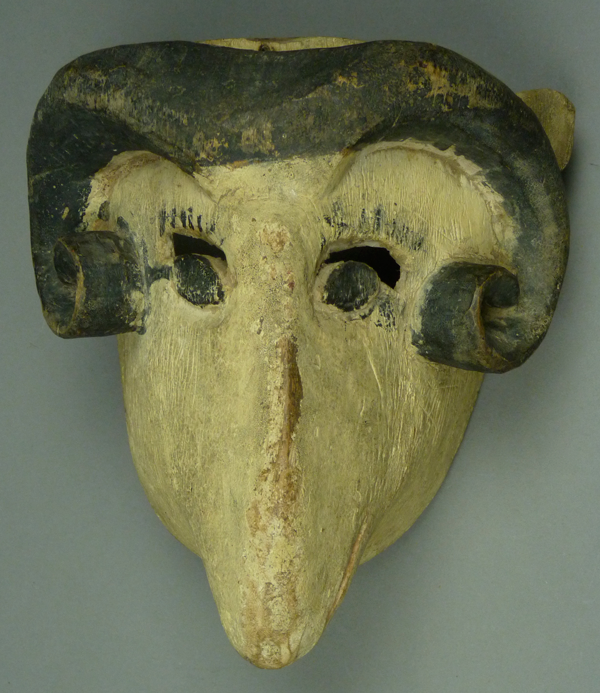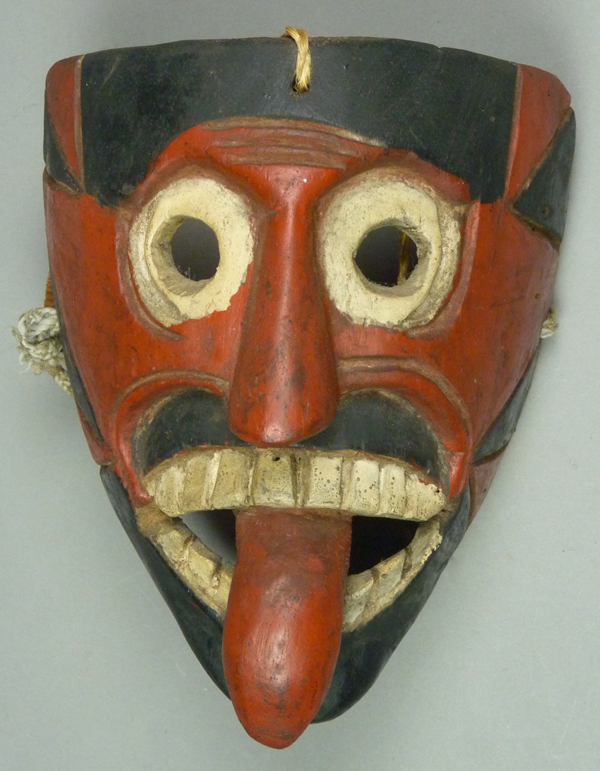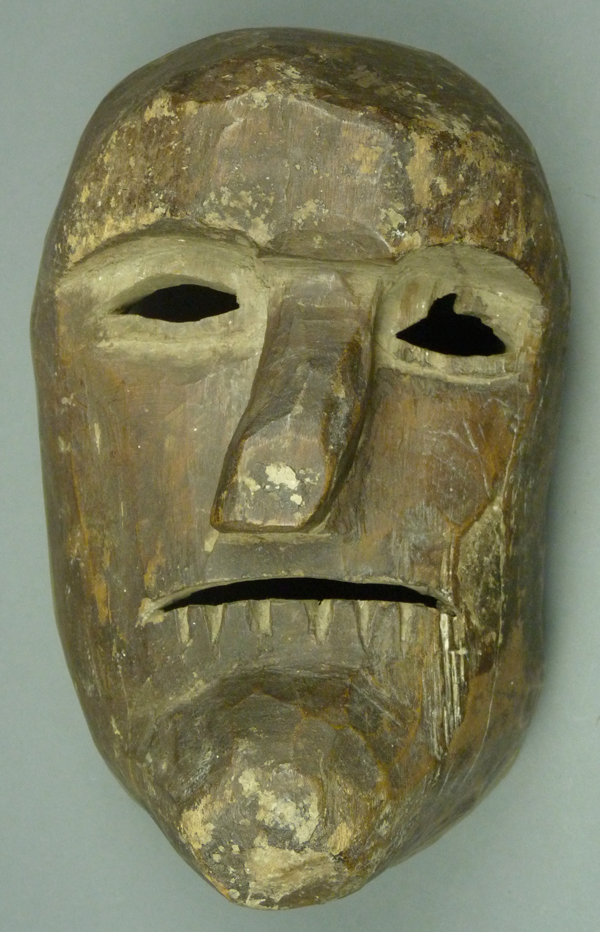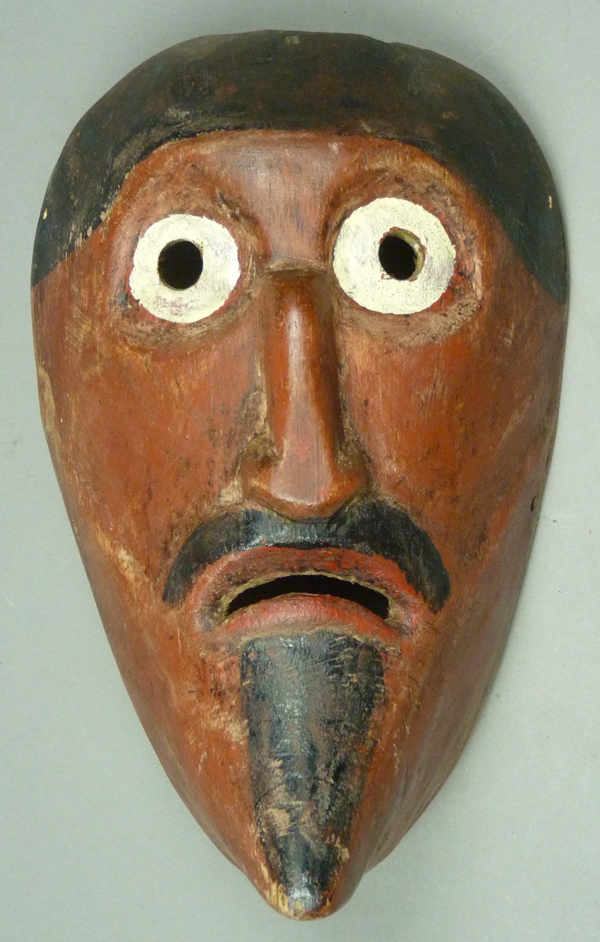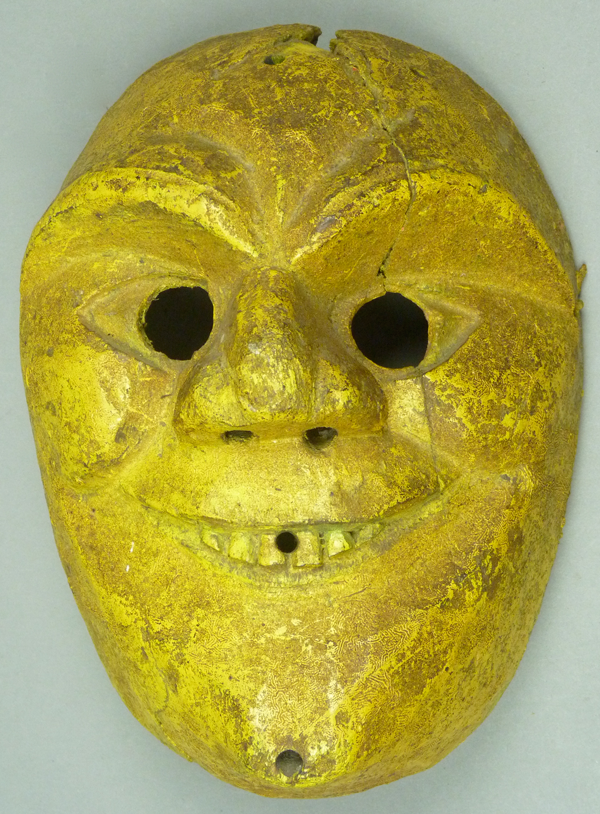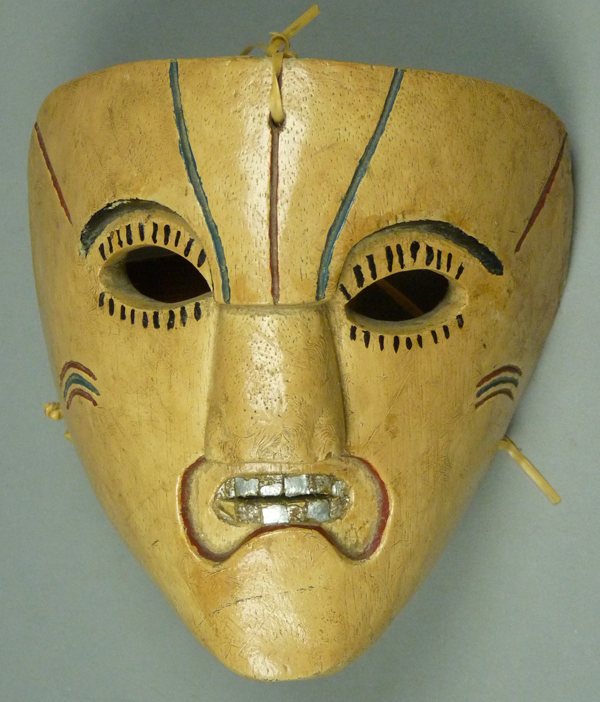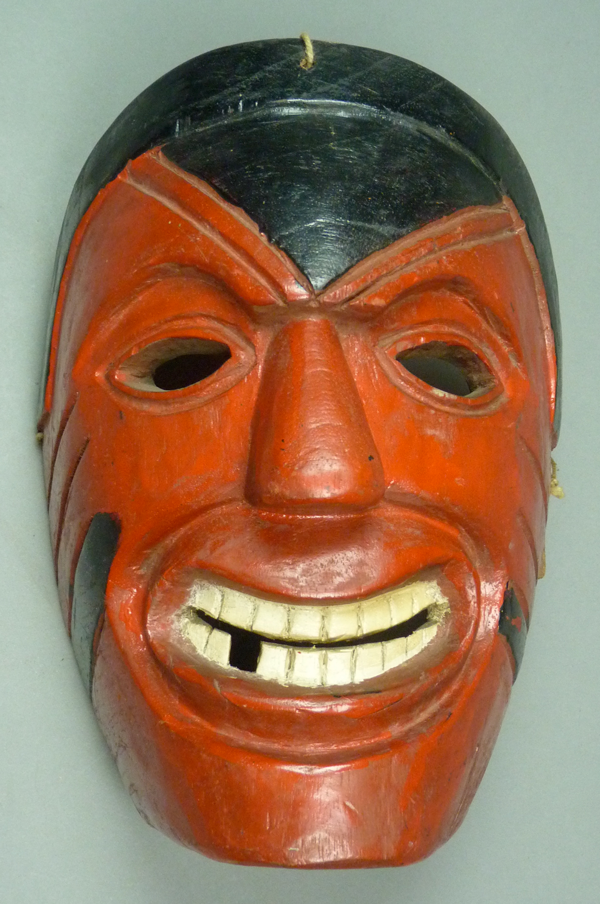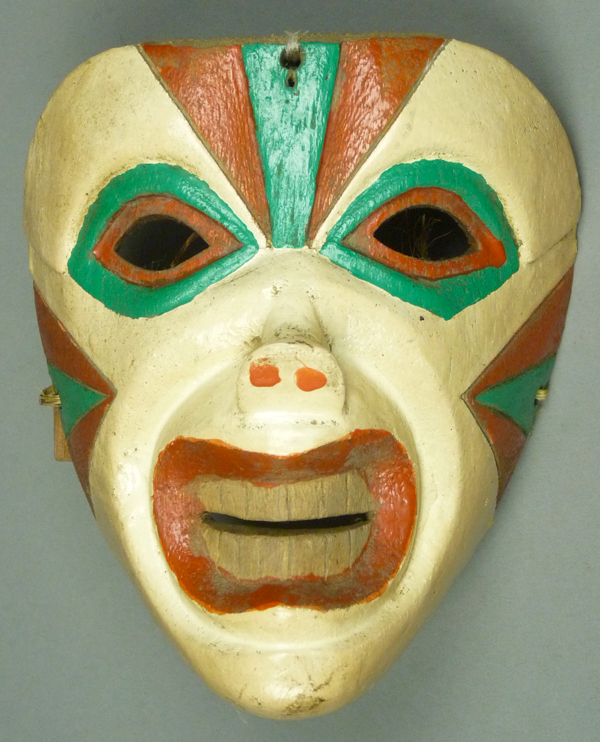In last week’s post I introduced you to animal-faced masks that are probably used interchangeably between the Xantolos celebration during Todos Santos (All Saints/ All Souls) and the celebration of Carnaval (Mardi Gras). Here are some more of these animal Xantolo masks. As you will see, some were designated at the time of collection as Xantolo (or Chantolo) masks, while others were said to have been danced in Carnaval. The first two represent goats or rams.
I bought this ram mask from Jaled Muyaes and Estela Ogazón in 1997. It was identified as a Xantolo mask from Zoquicualuya, in the Municipio of Huazalingo, Hidalgo.
This is a dramatic mask, with the curling horns carved in high relief. The paint is cracked with age.

